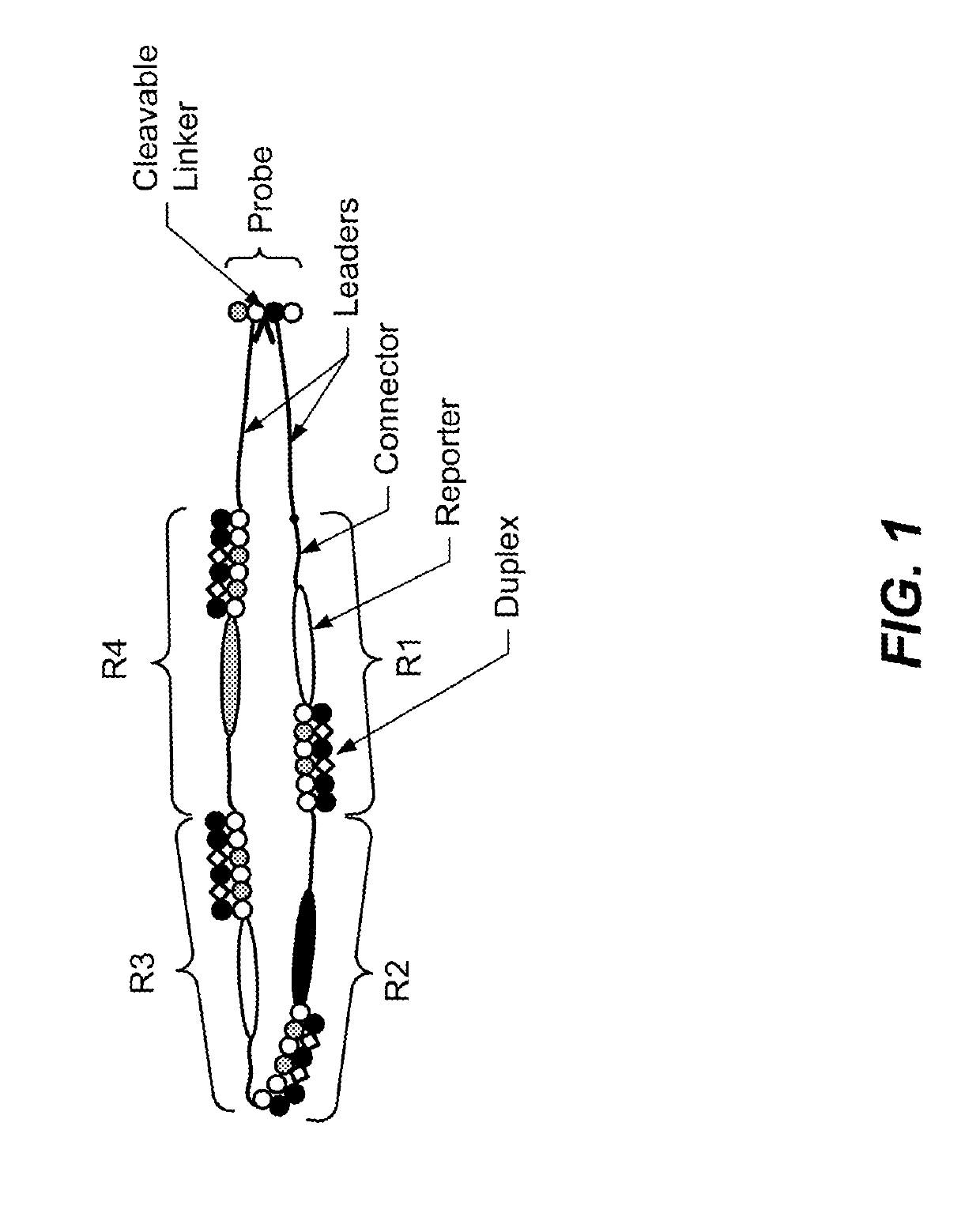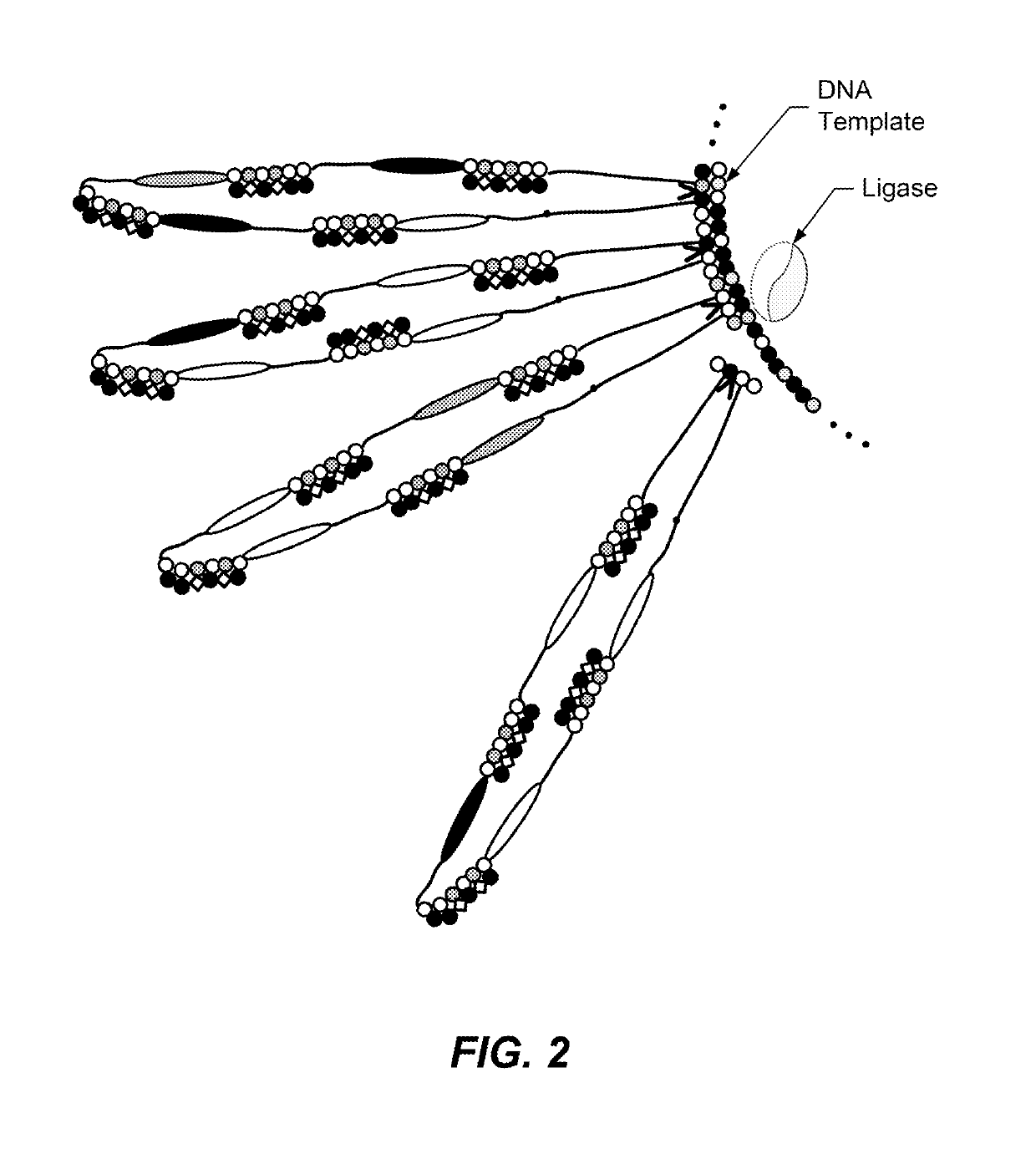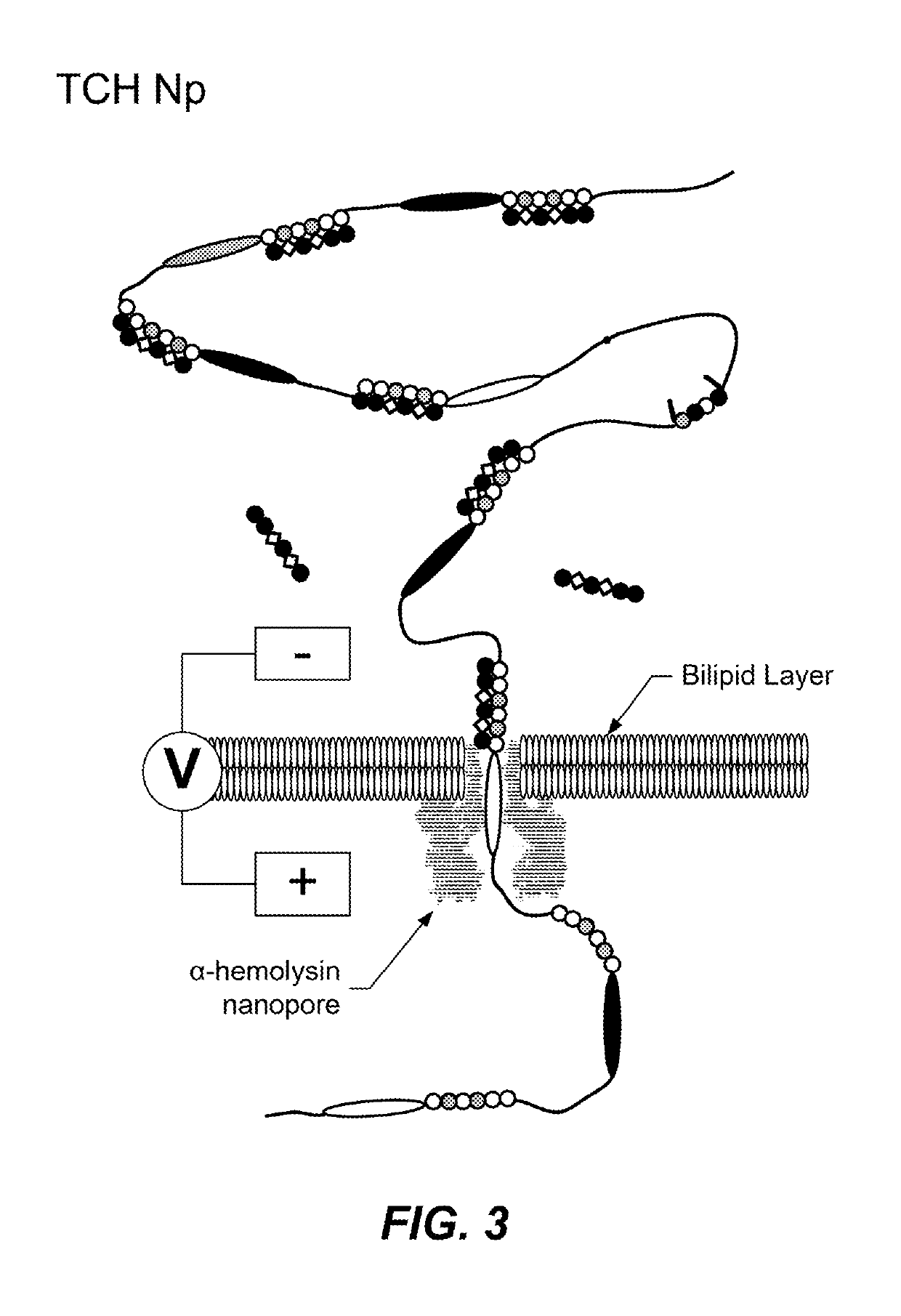Translocation control for sensing by a nanopore
a nanopore and target molecule technology, applied in the direction of instruments, biochemical equipment and processes, material analysis, etc., can solve the problem of not preventing the rapid dissociation required for high read rate, and achieve the effect of preventing rapid dissociation, high fill rate, and optimizing duplex stability
- Summary
- Abstract
- Description
- Claims
- Application Information
AI Technical Summary
Benefits of technology
Problems solved by technology
Method used
Image
Examples
example 1
Foldback Hairpin
[0099]An experiment was performed that used the foldback hairpin duplex to perform TCH. A molecule was synthesized with 4 foldback hairpins to perform TCH for reporter segments ordered as: poly-A, poly-C6, poly-A and a poly-PEG6. In the case of the internal poly-A reporter, a connector of poly-PEG6 was added before the next hairpin. This ensured that in each case, when the first three hairpins opened up and began to translocate, they unfolded back along a “thin” backbone polymer (either poly-C6, poly-PEG6). This unfolded condition was still thin enough to translocate the nanopore constriction.
[0100]The experiment used 2M KCl with 10 mM HEPES at Ph 7.4 in two reservoirs separated by a PC lipid bilayer membrane that was supported on a 25 micron Teflon aperture (see Nahid Jetha et al. “Forming an α-Hemolysin Nanopore for Single-Molecule Analysis,” Micro and Nano Technologies in Bioanalysis, vol. 544, R. S. Foote and J. W. Lee, Eds. Totowa, N.J.: Humana Press, 2009, pp. ...
example 2
Low Blocking Duplex
[0102]Dynamic range of the reporters is limited by the ion current blocking due to the duplex. Some duplex designs can reduce such blockage and increase dynamic range. FIG. 12 shows several alternate designs that increase ion current flow relative to the simple free duplex. In one embodiment, a porous structure or layer is placed in front of the nanopore which stops the duplex (and translocating molecule) but does not seriously impede the ion current flow. In another embodiment the duplex is a circularized free oligomer which reduces the distance that the end of the duplex can enter the nanopore and thus reduces ion current blockage. In the last embodiment the duplex is a single oligomer with 2 hairpins that fold back tightly to each other but have an additional overhang that forms the complementary portion that hybridizes to the translocating molecule.
example 3
Voltage Control
[0103]The distribution of release times at a fixed voltage is generally exponential (attributed to a single simple release mechanism). This limits detection efficiency because data must be captured at a rate sufficient to measure the ion blockage level before the fastest release, but then must wait or capture excess data for all the other slower duplex releases. According to this distribution, if a sampling rate is chosen so 99.9% of the duplex releases are slow enough to measure at least one complete sample, then for average measurement time is 1000 samples long.
[0104]One embodiment used to improve this efficiency is to use redundant reporters. If a sampling rate is chosen so 99.9% of redundant reporter pairs have at least 1 of their 2 duplexes release slow enough to measure at least one complete sample, then for average measurement time per reporter is reduced to 32 samples long (64 samples for the redundant reporter pair). This technique can be extended to 3 or mor...
PUM
| Property | Measurement | Unit |
|---|---|---|
| voltage | aaaaa | aaaaa |
| pulsed voltage | aaaaa | aaaaa |
| voltage | aaaaa | aaaaa |
Abstract
Description
Claims
Application Information
 Login to View More
Login to View More - R&D
- Intellectual Property
- Life Sciences
- Materials
- Tech Scout
- Unparalleled Data Quality
- Higher Quality Content
- 60% Fewer Hallucinations
Browse by: Latest US Patents, China's latest patents, Technical Efficacy Thesaurus, Application Domain, Technology Topic, Popular Technical Reports.
© 2025 PatSnap. All rights reserved.Legal|Privacy policy|Modern Slavery Act Transparency Statement|Sitemap|About US| Contact US: help@patsnap.com



